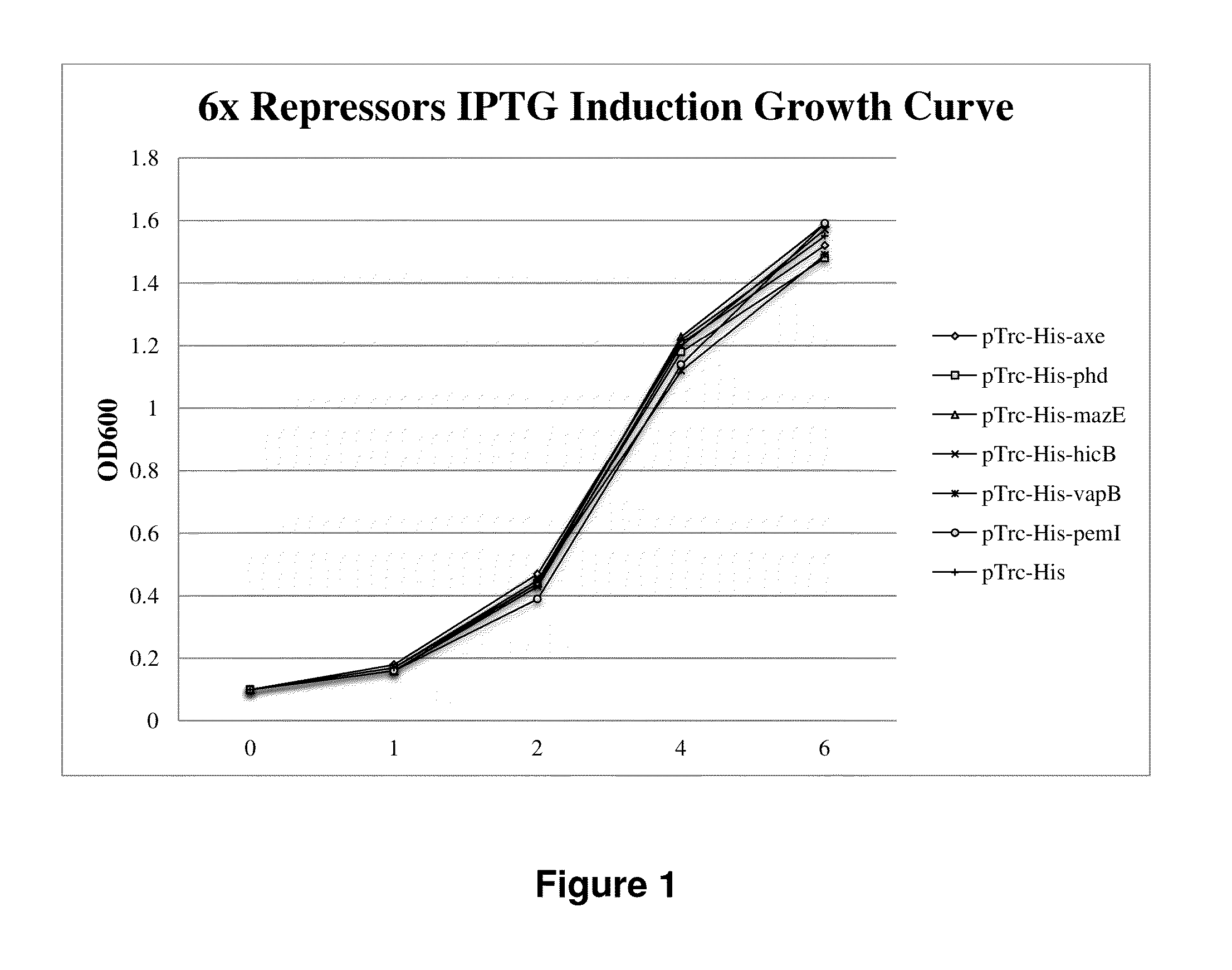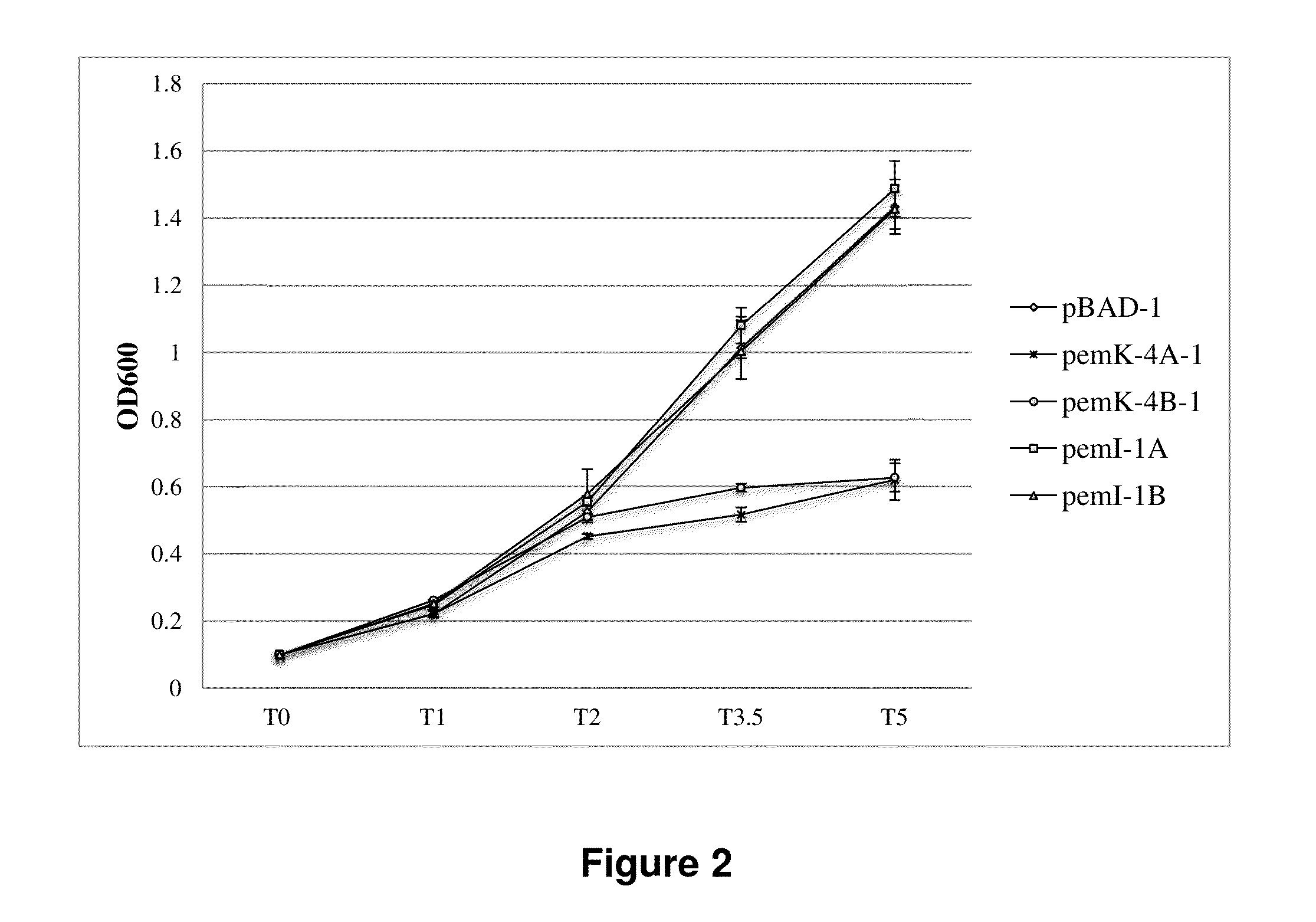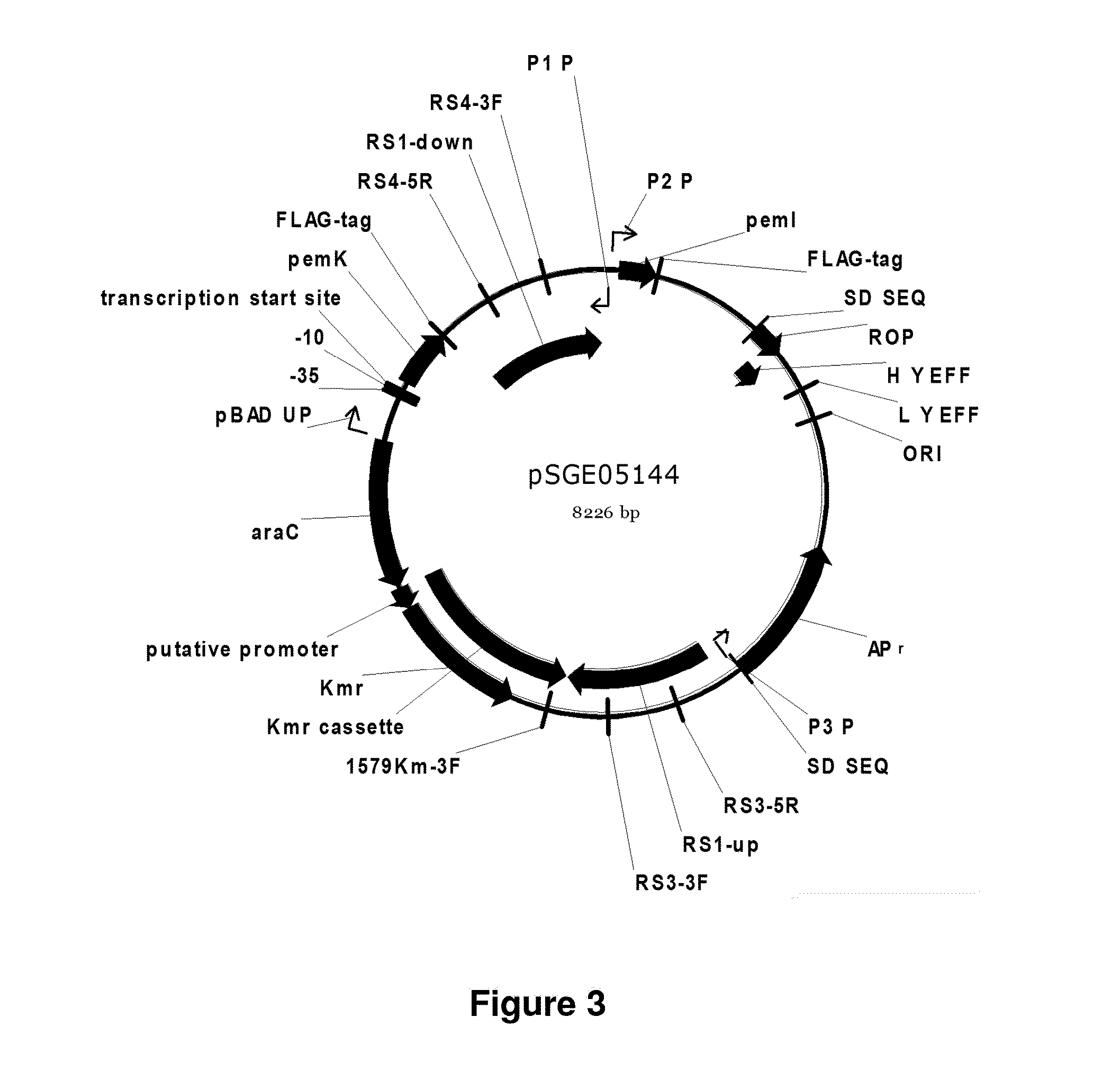Regulation of toxin and antitoxin genes for biological containment
a technology of toxin and antitoxin gene, applied in the field of regulation of toxin and/or antitoxin gene expression in microorganisms, can solve the problems of reducing the efficacy of toxin genes over time, limiting the potential of toxin genes in biocontainment, and self-destructing of genetically modified microorganisms by expression of heterologous genes encoding lethal proteins
- Summary
- Abstract
- Description
- Claims
- Application Information
AI Technical Summary
Benefits of technology
Problems solved by technology
Method used
Image
Examples
embodiment 1
[0173]A recombinant microorganism that includes an exogenous Type II toxin gene that encodes an endoribonuclease operably linked to a heterologous promoter, wherein the sequence of the toxin gene has been modified to eliminate target sites of the encoded endoribonuclease in the Type II toxin transcript RNA.
embodiment 2
[0174]The recombinant microorganism of embodiment 1, wherein the heterologous promoter is regulatable, preferably by one or more of light, temperature, pH, or the presence or absence of one or more nutrients or compounds in the culture medium or environment of the microorganism, optionally wherein the heterologous promoter is a synthetic promoter.
embodiment 3
[0175]The recombinant microorganism of embodiment 1, wherein the heterologous promoter is regulated by the absence or presence of a nutrient in the medium, optionally wherein the nutrient is nitrogen, phosphorus, sulfur, iron, copper, or CO2.
PUM
| Property | Measurement | Unit |
|---|---|---|
| temperature | aaaaa | aaaaa |
| temperature | aaaaa | aaaaa |
| temperature | aaaaa | aaaaa |
Abstract
Description
Claims
Application Information
 Login to View More
Login to View More - R&D
- Intellectual Property
- Life Sciences
- Materials
- Tech Scout
- Unparalleled Data Quality
- Higher Quality Content
- 60% Fewer Hallucinations
Browse by: Latest US Patents, China's latest patents, Technical Efficacy Thesaurus, Application Domain, Technology Topic, Popular Technical Reports.
© 2025 PatSnap. All rights reserved.Legal|Privacy policy|Modern Slavery Act Transparency Statement|Sitemap|About US| Contact US: help@patsnap.com



